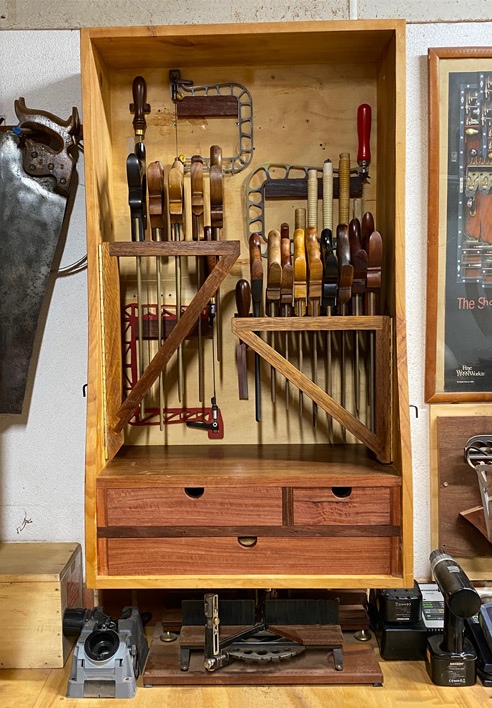Cory, the saws each have a dedicated slot that holds the back in two places, making them very secure ...
These were made this way, creating the ideal depth and width for each back ...
These slots are for the brass backs.
Over the front a solid section is glued, and this is slotted for the blade. When the back is slid down into the slot, they are effectively locked into position.
The "gates" are locked from the outside of the cabinet, so they do not swing freely.
If you look carefully here (at the sides), you will see two hex keys (one on each side). Just pull one out half way to release a gate.
Regards from Perth
Derek







 Reply With Quote
Reply With Quote



